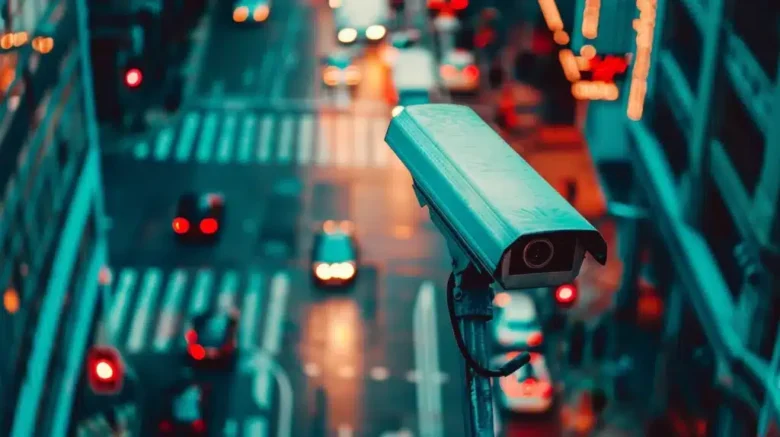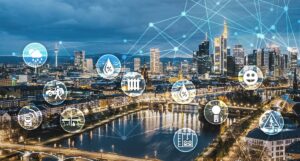Cities tend to be busy and lively places but they do indeed have their downsides, and amongst these is the concern of public safety. Urban security has become an important concern for both city officials and the residents. With the rapid growth in technology, cities are now able to implement new technologies that not only promote safety but enhance the living environment. Technology is evolving how cities do public safety, from intelligent surveillance systems to superior communication technologies. In this article, we will look at a few of these technologies and how they are making our cities more safe and more secure.
Modernization of Policing and Security Systems:
Over the last couple of decades, surveillance systems have been reinvented completely. Almost all forms of surveillance utilize CCTV cameras, but those basic systems have now given way to newer possibilities like high-definition CCTV cameras with night vision. Not only does this allow for more detail, but it also allows for detail in darker environments. Further, the importance of artificial intelligence is the next thing you want to look out for. Algorithms based on AI can be used to identify unauthorized activities in a given area automatically. Such programs observe motions and behaviors and notify law enforcement agencies before a crime is committed.
There is further integration accompanied by smart city infrastructure, which makes everything more effective. These next-generation systems can interconnect and extend the safety network across cities. The availability of cloud storage was also a turning point in the game because it offered more than enough data that could be stored and was accessible over the internet. With this kind of access, law enforcement agencies can solve cases more quickly during investigations. But this progress always comes with a price, which in this case is privacy. Maintaining a balance between public safety and individual privacy is still a hot topic of debate at the moment.
Smart Street Lighting for People’s Ease of Mind:
Smart street lighting has started to become a part of almost every city. These systems are built with LED technology and sensors, so they can adjust brightness according to current circumstances. In scenarios where there are pedestrians, the lights will automatically increase to support safety and visibility. This not only enhances a person’s comfort but also discourages crime.
Energy efficiency has a significant impact as well. Smart lights require a smaller amount of power compared to the traditional options, thereby lowering the operational costs of the cities. These lights are also able to last longer than traditional lights, which means that they do not have to be replaced often. Furthermore, these systems are amenable to cooperation with other smart city technologies. For example, they can provide data analysis services for traffic or other useful environmental data. By facilitating better light utilization at night and responsive light sources, smart street lighting improves urban public safety measures in modern cities.
Emergency Response and Communication Technology:
The development of emergency response technology is changing how cities manage crises. The use of telephones to communicate in times of crisis is fast becoming a story of the past. In this era, the use of cell phones and real-time messaging apps makes it easy to send out notifications to both people and officers in a matter of time.
Now the initial rescuers use advanced GPS location systems. These devices enable them to maneuver through busy cities in the shortest time possible and arrive at the designated place swiftly. Better situational awareness suggests a more accurate aspiration of an incident scene. Also, drones are in the picture now as helpful supporters during emergencies. They offer views from above, which assist commanders in making decisions in disasters such as floods or fires.
Public safety agencies are utilizing social media platforms as well for communication to instantly give updates and interact with communities. This two-way communication builds trust between law enforcement and community members while further disseminating crucial information when it is most needed.
Data Analysis and Predictive Policing:
Data analysis is revolutionizing the concept of policing. With the passing of time, all law enforcement agencies make use of huge chunks of data to determine the changes and trends in the activities of criminals.
Astute risk analysis incorporates algorithms that search through time, crime reports, and social media activity. This technology can recognize suspected crime-hot spots before the events unfold. Resources can then be better distributed after this information. While this method claims to improve crime prevention, it, on the other hand, brings out issues of privacy as well as bias. The data that is being used is likely to be biased about these communities, leading to over-policing of the particular areas.
With these drawbacks, many cities are already trying predictive tools, demonstrating that there is a willingness to learn from successes and failures. The purpose is very clear: enhance security through technology but not deny or compromise justice to any person regardless of race. As the new developments progress in the future, the ethical matters surrounding the usage of the new tools will be as important to the global arena.
Challenges and Critics of Technological Solutions:
While it is most expected that technological advancement with its promise for safety utilization will reverse problems faced previously, this expectation is rather idealistic. One of the more dominating factors of criticism relates to privacy. The question of freedom for many people comes under increasing scrutiny as surveillance seems to increase. Unregulated and prolonged surveillance could foster mistrust between communities and the state. Another challenge is the effectiveness of these technologies.
If a camera goes down at an important moment, then there’s a good possibility that something terrible will take place. If a security device malfunctions, it can result in extreme negligence in the safety measures. Also, there is the problem of the bias of the algorithms that analyze the data for predictive policing. Analysis of such tools reveals a peculiar situation where they focus on predicting crimes in the same neighborhoods where such crimes have occurred regardless of how old the data may be.
Funding is another significant issue that continues to be a contentious point. The utilization of such a sort of advanced technology has the disadvantage that resources end up being redirected from community spaces that actively strengthen the relationship between the community and local law enforcement. The integration of technological penetration in urban planning and marketing systems poses unique challenges to policymakers.
The Future of Technology in Public Safety: Emerging Trends
The utilization of technological applications in ensuring public safety has vast potential that offers a novel transformative opportunity for the sector. There is a continuous innovation assortment of cutting-edge tools that have embedded artificial intelligence and machine learning technology into their authentic security appliances. Drones will be essential during emergencies to provide aerial views or when a large crowd is gathered at a single point. They can get to remote places and thus taper response time considerably.
Law enforcement officials are also beginning to adopt wearable technology trends. Body-worn cameras and health wearables not only enhance public accountability but also bolster an officer’s safety. Additionally, smart cities are coming soon. Such urban landscapes will be connected through IoT-enabled devices, which will share information with relevant authorities in real time, which guarantees more effective responses in times of emergencies.
With the rise of these technologies for building smart cities, the roles of technology companies and city planners should align. This will help build environments where the residents are secure and leverage creativity and technology for safety.
Conclusion:
In the modern world, the use of technology in urban public safety seeks to keep up with contemporary standards. With the third world becoming more and more innovative in finding better ways of solving problems, there is a need to deliver more effective solutions. There is always some confidence in the way people see things since, as advancements in the fields of surveillance, smart lighting, and data analytics take their roots, there is a promise for advancement in the safety of society. It is comforting for people to know that the systems are all automatic. There is, however, a need to stay alert for issues related to privacy and morality. It is critical to get the sphere between protecting life and protecting civil rights right.
In the future, coordination between tech creators, enforcement officers, and societies will be significant in fostering order. In the same way, it is possible to develop a system in which the improvement of technical aspects of society translates into progress in the safety of society. Cities are about to change because technology has come with new measures of safety. If societies can adapt to these changes in a good manner, it is possible to achieve the best in the future.
FAQs:
1. Which surveillance systems are most often encountered in urban areas?
Cities often utilize high-definition cameras equipped with facial recognition capabilities, drones, and drones for aerial monitoring. These are useful technologies in enforcement agencies in aiding the response to occurrences.
2. In what way is smart street lighting, for example, useful for public safety?
Smart street lights can dependably and autonomously change their illumination based on time of day or levels of activity. They may also be outfitted with motion sensors that can help to illuminate areas and prevent suspicious behavior during the night.
3. What changes have occurred regarding interaction during the management of emergencies?
Emergency dispatchers nowadays make use of contemporary dispatching programs that allow integrating Slice data, which is a huge time saver for responders not only to evaluate the situation but also to reach the location in no time.
4. How do you respond to the assertion that data can be employed to analyze criminal trends and explain their reasons?
Yes, predictive policing. This technique incorporates algorithms that analyze crime history and social aspects of a certain area to predict the places that are likely to be affected by certain crimes. Rather hopeful but still needs to be implemented with caution so as to enhance a fair and just approach.
5. What are the arguments against the effectiveness of technological solutions focused on increasing public safety?
Issues include, but are not limited to, privacy concerns as a result of surveillance measures and the presence of bias in machine learning models deployed to inform policing strategies. Finding an equilibrium between such inventiveness and ethics continues to be a daily battle.




